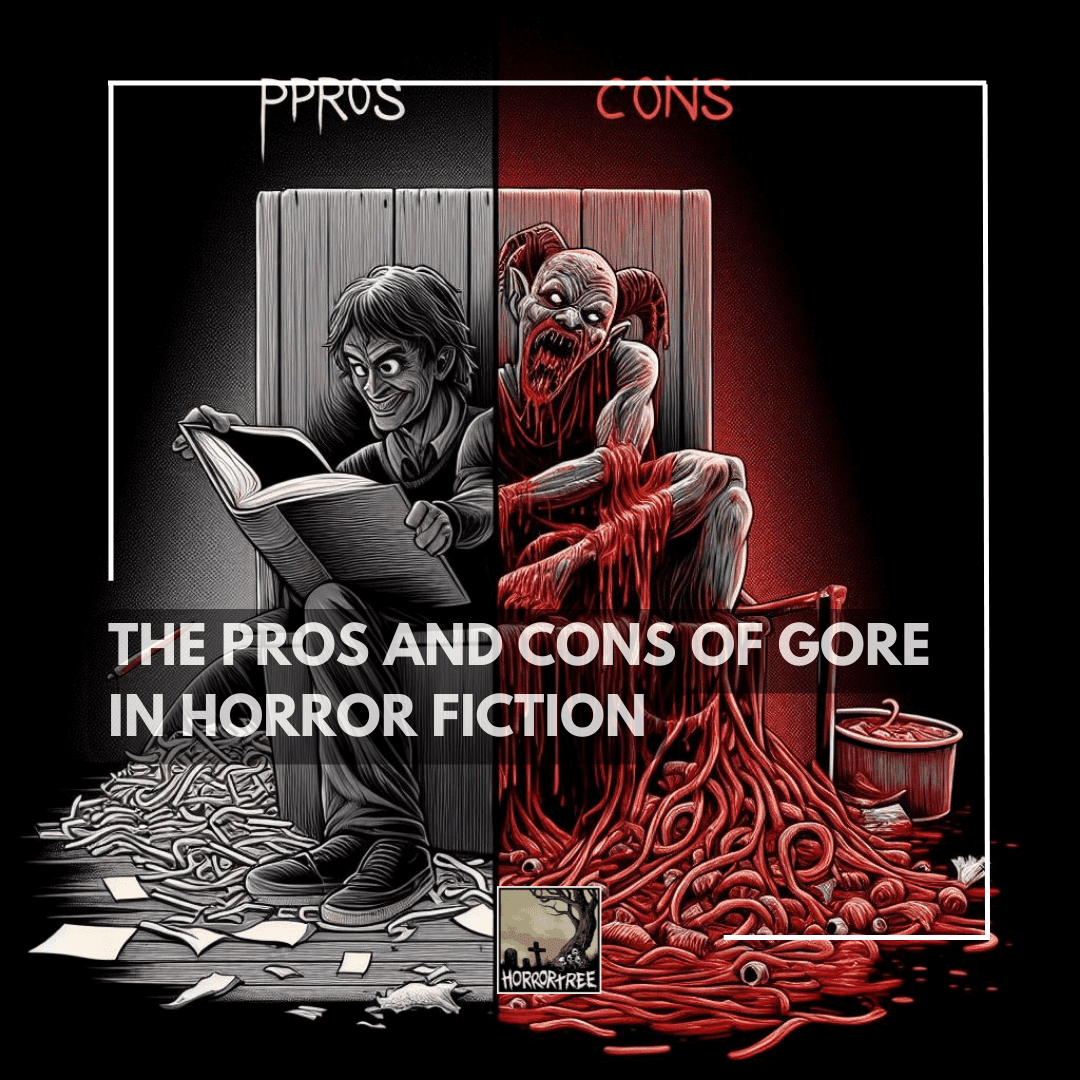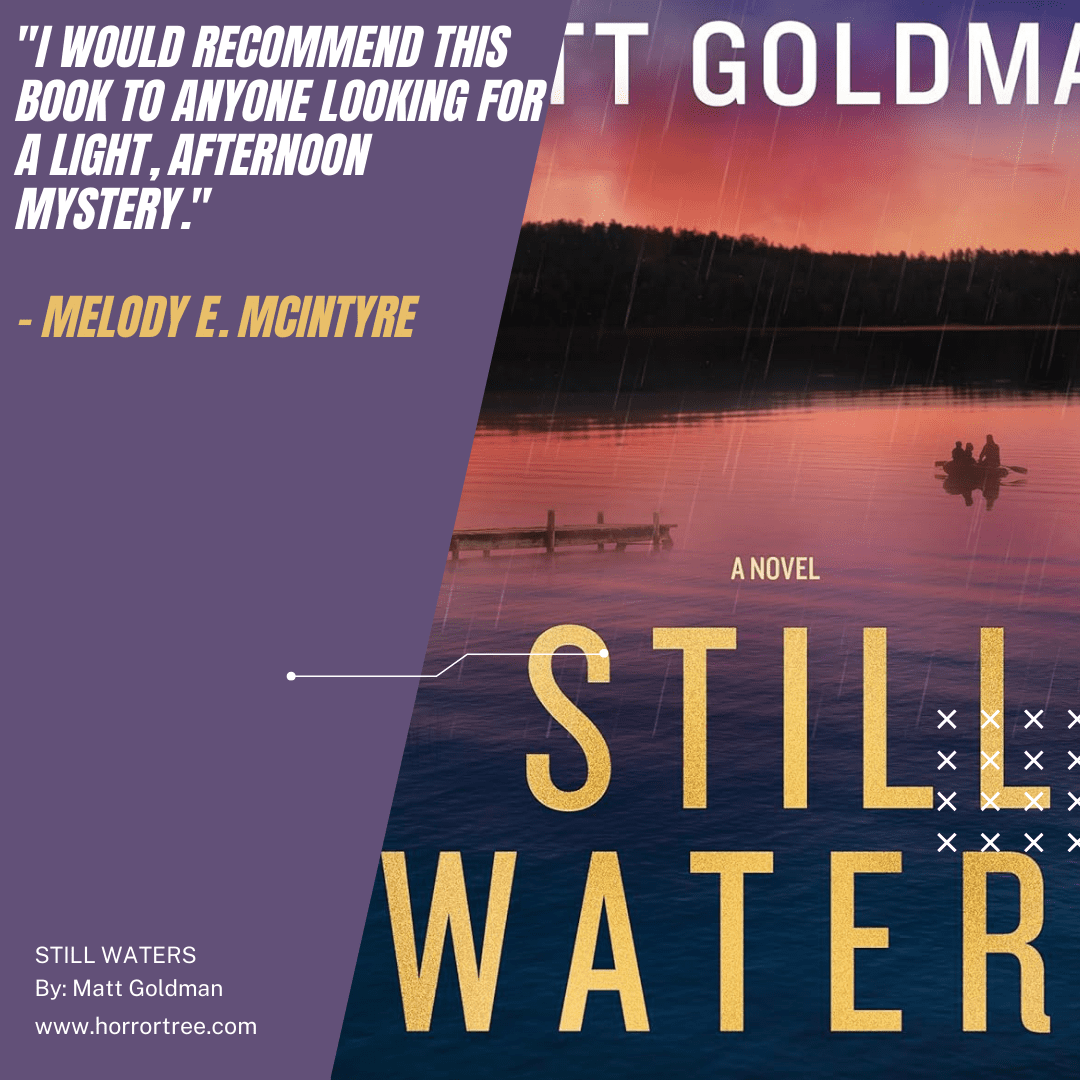The Pros and Cons of Gore in Horror Fiction
The Pros and Cons of Gore in Horror Fiction
When writing horror, there are several elements to consider in addition to setting, character, plot, theme, and conflict. For many horror writers, gore is often a topic of debate. Is there such a thing as too much of it? Does a story even need tons of bloodshed and brutality to disturb or frighten its readers?
In this post, I’m going to explore the pros and cons of adding gore — which includes blood, violent acts, and vile imagery — to help you decide whether to incorporate it into your own writing.
Pro: Gore keeps readers intrigued
There are countless horror stories out there, so how can you make your work stand out from the rest? Besides using a helpful writing template to flesh out your ideas and including gut-wrenching plot twists, a memorable narrative voice, and compelling dialogue, you can also consider incorporating gore to pique your readers’ interest.
Humans are hardwired to feel disgust — this evolved psychological system helps us identify potentially harmful and even lethal threats. But many of us also derive enjoyment from the grotesque, seeking books, films, TV shows, podcasts, and video games that’ll send shivers down our spines.
From a structural standpoint, sprinkling grisly moments throughout a story can help build tension and keep readers eager to stay until the very end. These readers know that they will never experience the blood-curdling incidents they see on the page, so they delve into fictional worlds for a few minutes or hours to encounter something horrific from a safe, comfortable distance. More importantly, a high-drama description of an injury packed with sensory details will build suspense, getting readers to wonder what could possibly follow a scene like that. The trick, of course, is to then deliver — but if you strategically plant gore where it makes structural sense, it can help build up your story’s climax.
Pro: Gore can push your story forward
Many writers add gore for shock value, but consider going one step further by using gore to advance your story’s plot. For example, a horrendous moment could serve as an inciting incident and bring readers down a path they weren’t expecting. It could also motivate the protagonist of your story to make an irreversible decision, such as becoming a murderer to avenge the death of a loved one. Fictional characters, after all, shouldn’t wreak havoc on the people around them for no reason.
To elevate your writing even more, consider using gore to explore the hidden depths of your characters. Take Bret Easton Ellis’ popular 1991 novel American Psycho as an example — although it’s typically considered to be a psychological thriller and satirical text, it has several gory moments that help readers form a more complex understanding of its protagonist Patrick Bateman, a Wall Street investment banker living a double life as a psychopathic serial killer. As Ellis’ novel progresses, Patrick’s actions become more and more violent, showing readers just how empty and detached from reality he truly is. In this case, the use of gore shows the escalation of the story, raising the stakes even higher.
Pro: Gore can make your writing more immersive
Many writers attempt to evoke their readers’ senses through sensory imagery, thereby crafting a more engaging, immersive story. By writing about gory moments and violent acts in detail, you create more opportunities to transport your readers to the fictional settings you’ve created.
When you hear the word “vomit,” what comes to mind? In addition to seeing puke on a wall, floor, or — in more unfortunate cases — a person, think about the odor of half-digested food in the air. Think about the sounds of someone hurling their breakfast and the sounds of puke splattering on a hard surface. Think about how sour and acidic vomit tastes. Think about what it would feel like if it somehow ended up between your fingers or in your hair.
Even a single word such as “vomit” can elicit several emotions and reactions in your reader, so think carefully when choosing words to create a more compelling story.
To give you an example of a gory book that immerses its readers, let’s briefly consider Naomi Booth’s eco-horror novel, Sealed — and consider this a spoiler warning. At the end of the book, which takes place in a world devastated by a pandemic (not, in fact, COVID-19), the pregnant protagonist gives birth by herself in a harrowing, tense scene of body horror. It’s a completely terrifying moment that stays with readers and shows the sheer sense of isolation the protagonist experiences, as well as the staggering sense of terror she feels at the possibility that something will happen to her child.
Con: Gore turns some readers away
Just as there are countless readers out there who love anything macabre, there are also those who flinch at the slightest mention of gore. Readers who can’t stomach graphic descriptions may push your writing to the side, opting for stories that rely on psychological horror or the supernatural to get their fix.
However, these aren’t readers you need to concern yourself with if gore is integral to your craft. If gore is something you’re just tempted to add for fun or not necessarily central to the way your story works, it’s good to bear in mind that by choosing to include it, you may be limiting the reach of your work.
Horror fiction that doesn’t include lots of gore is, after all, more likely to make it into the mainstream. Just look at Susan Hill’s 1983 gothic horror classic The Woman in Black, which famously follows a young lawyer named Arthur Kipps who stays in a secluded house in a remote English town. Arthur is eventually haunted by the ghost of a woman wearing black, and he sets out to find out more about her. There are no sharp knives and bloody entrails in Hill’s novel — instead, it relies on tension and an eerie atmosphere to unsettle and scare, and it’s often studied in British schools because of this lack of gore.
Remember that if you choose to include gore in your work, you’ll be ruling out the chance of a wide readership that reaches across the spectrum of horror readers and into the general public, which includes schoolchildren.
Con: Readers become bored or desensitized if there’s too much gore
“You can never have too much of a good thing” isn’t something we should apply while writing gore in horror fiction, no matter whether it’s self-published or traditionally published. In fact, if you include too many gruesome moments or details, your story will fail to elicit a range of emotions from your readers like you had intended.
Horror writers aim to invade their readers’ minds and crawl under their skin; to unsettle them with fearsome ideas and carefully crafted frightening scenes. But by including too many instances of graphically described blood or violence in their fiction, they set themselves up for disappointment, providing several opportunities to bore and even desensitize their readers. These readers might get used to the seemingly never-ending gruesome descriptions, and they may even skim through certain passages if they feel as if they’ve encountered similar ones before. Why? Because gore loses all of its shock value when repeated over and over.
Keep in mind that there is also power in restraint, and as most good creative writing classes suggest, writers should consider incorporating narrative techniques such as foreshadowing and unreliable narration into their stories to create more impactful work.
Con: When written badly, gore puts readers off
While writing gore, it’s important to remember that cliché or overly descriptive passages may backfire on you. Readers who love extremely upsetting scenes might even laugh or roll their eyes when encountering something that’s way too over the top or overdone.
Consider balance as you write — use strong, impactful words and imagery, but also kill your darlings and reflect on points where you can hold back. Instead of dedicating an entire page to the way blood trickles out of a slain character, briefly describe the blood before focusing on other unsettling details surrounding the character’s corpse, such as the bruises or lacerations on its cold, stiff flesh or the strange way in which its body is bent. Try to stay away from purple prose to prevent your readers from cringing for all the wrong reasons!
And there you have it — a list of pros and cons to help you consider the appearance of gore in your writing. Remember that there are various kinds of gore, so if you think a brief moment of bloodshed would be more suitable than a graphic decapitation, go with your gut; after all, you know your story best. Writing grisly scenes and details isn’t for the faint of heart, but if you’re up for the challenge, it just might be what your piece needs to go from unsettling to absolutely petrifying.
- About the Author
- Latest Posts
Rose Atkinson-Carter is a writer with Reedsy, a marketplace and blog that helps authors with everything from finding the best writing software to hiring a ghostwriter and more.













